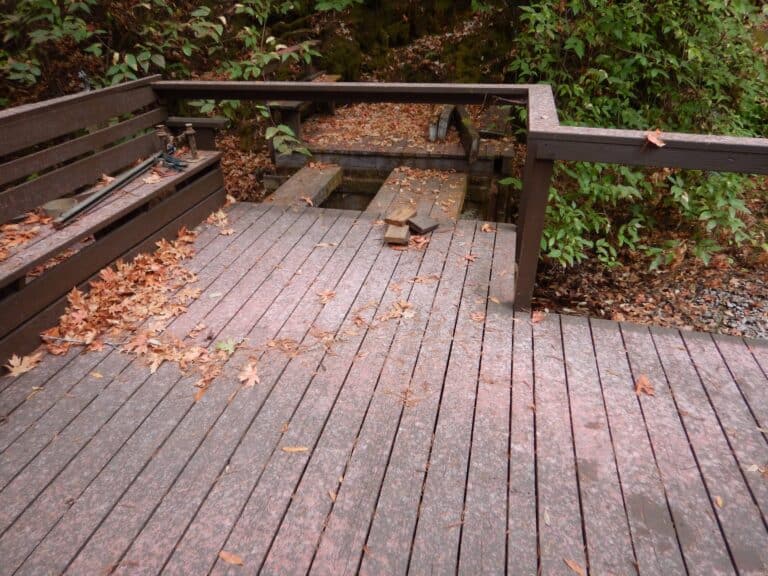Photo: Russian Riverkeeper’s Birkin Newell surveys Mill Creek and the now regrowing redwoods, Tuesday, April 4, 2023 that dot the fire-scarred landscape, a result of the 2020 Walbridge Fire. Newell is the restoration director of the organization. (Kent Porter / The Press Democrat) 2023
A lawsuit filed by an environmental group claims that aerial drops of ammonium phosphate by the U.S. Forest Service is winding up in creeks and rivers, contributing to algae blooms and fish die-offs.
The 2020 Walbridge Fire had finally stopped burning and Birkin Newell was visiting a property along Wine Creek, a tributary that feeds into Dry Creek — one of Sonoma County’s most important salmon spawning habitats.
Newell, who is restoration director for the Russian Riverkeeper conservation organization, said the owner of the property was concerned about fire retardant that had been dropped on the creek during the more than six-week battle against Walbridge.
In photographs he took on Oct. 8, 2020, six days after the fire had officially ended, you can see large and small faded pink spots completely covering a wooden deck, as well as soil, leaves and rocks along the creek.
The rose-colored remains were just a tiny portion of the 1,130,633 gallons of fire retardant deployed by Cal Fire during the LNU Lightning Complex conflagration, which included the Walbridge, Meyers and Hennessey fires.
The retardant, whose essential ingredient is ammonium phosphate — an inorganic compound used to enhance plant, yeast and bacteria growth — has become a symbol of defiance in the age of massive wildfires and climate change.
But some are raising concerns about the possible environmental fallout of fighting wildfires with what is essentially fertilizer.
“I was looking at someone’s wooden deck over the creek that was pure pink from this stuff,” Newell recalled. “That property owner was very concerned about it all, and she was trying to literally wash it off and dispose of that safely before the rains came.”
Aerial retardant drops are not permitted in waterways or buffer zones established to protect threatened or endangered species — except in cases where human life or public safety is at risk. The current buffer on either side of a waterway is 300 feet.
The affected area Newell was examining was about 200 feet wide and encompassed about 100 feet or more of stream channel, and he said he assumed it was an accidental drop, since it was so close to the creek.
The use of ammonium phosphate-based fire retardant is now the focus of a federal lawsuit in Montana. Last October, an Oregon-based environmental group filed suit against the U.S. Forest Service alleging that the agency for years has been dumping hundreds of thousands of gallons of fire retardant into streams, creeks and rivers in violation of the Clean Water Act.
The suit would seem to put two issues that are critical to Northern Californians — protecting the environment and defending against catastrophic wildfires — in direct […]
Full article: An aerial fire retardant is widely used in Northern California. Is it harming the environment?

